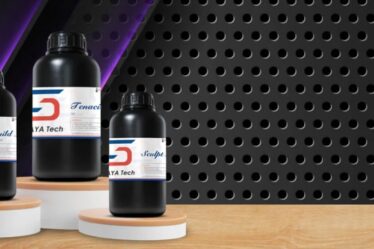Glass beakers are foundational elements in laboratory settings, renowned for their versatility and durability. The science behind their widespread use lies in the properties of borosilicate glass, a type of glass known for its excellent thermal and chemical resistance. This material can withstand sudden temperature changes and resist chemical corrosion, making it ideal for a wide range of experiments. The transparency of glass beakers allows scientists to visually monitor reactions, ensuring precise control over experimental conditions. The uniform wall thickness and flat bottoms of beakers contribute to even heating and stability, essential for consistent and reliable results. Furthermore, glass beakers come in various sizes, from small 50 ml beakers to large 5,000 ml beakers, catering to different experimental needs. Their simple design, featuring a spout for easy pouring, makes them user-friendly and efficient. The versatility of glass beakers extends beyond mixing and heating; they are also used for stirring, decanting, and even temporary storage of chemical solutions. The durability and reliability of glass beakers have made them a staple in laboratories worldwide, supporting scientific research and experimentation across multiple disciplines.
Exploring Different Types Of Glass Beakers For Your Lab
The selection of glass beaker available for laboratory use is diverse, each type tailored to specific applications. Standard glass beakers, also known as Griffin beakers, are the most common, characterized by their wide mouths and low height. These are ideal for general mixing and heating tasks. Tall-form glass beakers, or Berzelius beakers, have a narrower mouth and greater height, providing better control for certain reactions and measurements. Filtering beakers come with a spout designed for easy filtration and decanting of liquids. Heavy-duty glass beakers, made with thicker walls, offer enhanced durability and are suitable for high-temperature applications. Low-form beakers, which are shorter and wider, provide greater stability and are often used when stirring or heating large volumes of liquid. Double-scale glass beakers have graduation marks on both sides, facilitating precise measurement from different angles. Pyrex beakers, a brand of borosilicate glass, are renowned for their exceptional heat resistance and are frequently used in labs. Specialty beakers, such as those with reinforced rims or those designed for microwave use, cater to specific experimental needs. Understanding the unique features and benefits of each type of glass beaker enables laboratory personnel to select the most appropriate tools for their specific applications, ensuring accuracy and efficiency in their work.
How To Properly Clean And Maintain Your Glass Beaker?
Proper cleaning and maintenance of glass beakers are crucial for ensuring their longevity and accuracy in experimental procedures. To clean a glass beaker, start by rinsing it with distilled water to remove any residual chemicals. For thorough cleaning, use a mild detergent and a brush to scrub the interior, paying special attention to any residue or stains. Rinse the beaker thoroughly with distilled water to remove any soap residues. For stubborn stains, a soaking solution of water and a gentle cleaning agent, such as a diluted acid or base, can be used. It’s important to avoid abrasive materials that can scratch the glass surface. After cleaning, allow the beaker to air dry completely or use a lint-free cloth to dry it. To maintain the integrity of glass beakers, avoid exposing them to sudden temperature changes, which can cause thermal shock and lead to cracks or breakage. Store glass beakers in a secure, stable environment, preferably in a cabinet or on shelves with adequate support to prevent tipping. Regular inspection for chips or cracks is essential, as damaged beakers can compromise experimental results and pose safety hazards. Proper labeling and careful handling further contribute to the longevity and reliability of glass beakers. By adhering to these cleaning and maintenance practices, laboratory personnel can ensure the optimal performance and safety of their glass beakers.
The Evolution Of The Glass Beaker In Scientific Research
The glass beaker has undergone significant evolution since its inception, reflecting advancements in scientific research and technology. Early laboratory vessels were often made from metals or ceramics, which lacked the transparency and chemical resistance of modern glass beakers. The development of borosilicate glass in the late 19th century revolutionized laboratory glassware, introducing materials that could withstand extreme temperatures and corrosive chemicals. This innovation enabled more complex and precise experimental procedures. Over time, the design of glass beakers has been refined to enhance functionality and safety. The introduction of standardized measurements and graduations on beakers has improved accuracy in experimental work. Advances in manufacturing techniques have led to the production of beakers with uniform wall thickness and increased durability. The integration of specialty coatings and reinforced rims has further enhanced the resilience and versatility of glass beakers. The evolution of the glass beaker mirrors the progress of scientific research, with continuous improvements driven by the need for more reliable and efficient laboratory tools. Today, glass beakers are indispensable in scientific laboratories, supporting a wide range of research activities from basic chemical reactions to advanced analytical procedures. The ongoing innovation in glassware design and materials continues to push the boundaries of scientific exploration and discovery.
Top Uses For A Glass Beaker In The Lab
Glass beakers are among the most versatile tools in a laboratory, serving a multitude of purposes across various scientific disciplines. One of the primary uses of a glass beaker is for mixing chemical solutions, where its wide mouth and flat bottom facilitate easy stirring and blending. Beakers are also commonly used for heating liquids, thanks to their ability to withstand high temperatures without reacting with the contents. Measuring and transferring liquids is another key application, with the beaker’s graduated markings allowing for precise volume estimation. In analytical chemistry, beakers are used for titration processes, where their transparency and shape aid in observing color changes and reaction endpoints. Glass beakers also play a critical role in biological laboratories, where they are used for culturing cells and microorganisms. In environmental science, beakers are employed to collect and analyze water samples, while in medical research, they are used to prepare and store reagents and buffers. The versatility of glass beakers extends to educational settings as well, where they are essential tools for demonstrating chemical reactions and principles to students. Their robustness and reliability make glass beakers indispensable in any laboratory, supporting a wide range of experimental and analytical procedures.
Choosing The Right Glass Beaker For Your Experiments
Selecting the appropriate glass beaker for your experiments is essential for achieving accurate and reliable results. The first consideration is the type of glass, with borosilicate glass being the preferred choice due to its superior thermal and chemical resistance. The size of the beaker is another crucial factor, with larger beakers suitable for bulk mixing and smaller beakers ideal for precise measurements and reactions. The form of the beaker, whether standard, tall-form, or low-form, should align with the specific requirements of your experiment. For example, tall-form beakers are advantageous for distillation and titration, while low-form beakers offer greater stability for stirring and heating. Graduated markings are essential for measuring volumes accurately, so ensure the beaker has clear and precise graduations. Specialty beakers, such as those with reinforced rims or those designed for microwave use, should be considered for specific applications.
Conclusion
Glass beakers are indispensable tools in scientific laboratories, offering versatility, durability, and precision in various experimental procedures. Understanding the science behind glass beakers, the different types available, and proper cleaning and maintenance techniques is crucial for laboratory efficiency and safety. The evolution of glass beakers has mirrored advancements in scientific research, leading to continuous improvements in design and materials. Whether used for mixing, heating, measuring, or storing liquids, glass beakers play a vital role in supporting a wide range of scientific activities. By selecting the appropriate glass beaker for specific experiments, laboratory personnel can ensure accurate and reliable results, contributing to the success of their research endeavors.


